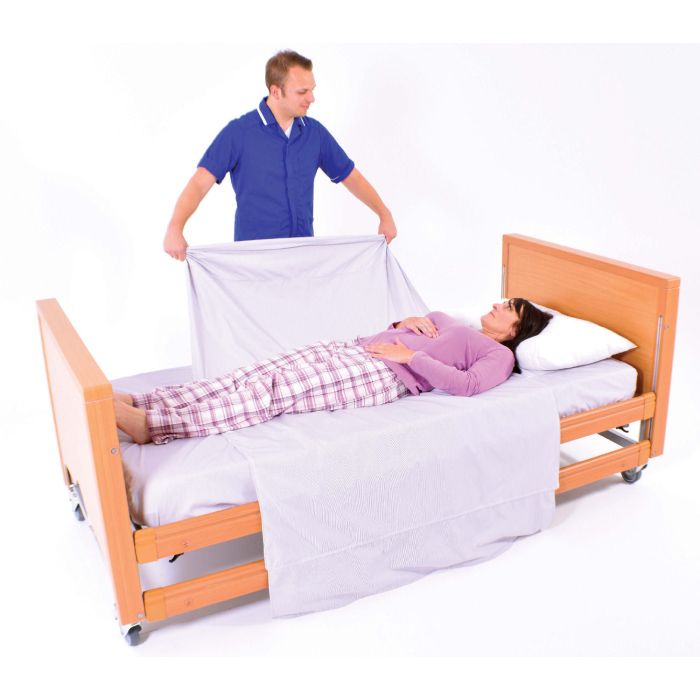Okay so here’s the thing about moving patients in bed – it can be a real backbreaker. I remember struggling hard last Tuesday trying to help Mrs. Henderson shift up the bed after she slid down. Felt like wrestling a stubborn bag of potatoes! That night, my shoulders were screaming. Knew there had to be a better way than just yanking on sheets or risking injury pulling her. Stumbled across the whole concept of using draw sheets properly. Sounded too simple, honestly. But hey, worth a shot!

The Lightbulb Moment & Getting Started
First step? Snagged a proper draw sheet. Just a folded flat sheet works too, I learned, but I bought a couple of those thicker cotton ones meant for this job. Plopped one down on my practice bed at home. Slid it sideways across the mattress until half was hanging off one side, half off the other. Then I put a thin plastic pad on top in the middle – you know, just in case. Finally, smoothed the whole thing out flat. It looked… like a sheet. Wasn’t sure what magic I expected yet.
The Actual Moves: My 5 Simple Wins
Used my skeptical nephew as a guinea pig (promised him pizza after!). We tried the basic stuff:
- Shifting Sideways: Had him roll slightly onto his side away from me. I grabbed the edge of the draw sheet on his back side, gathered it tightly towards me. When he rolled back, that gathered bit acted like a slide. Gave a gentle pull – boom! He slid sideways way easier than dragging the bedsheet under him. No fighting friction!
- Moving Up in Bed (Solo Version): Tilted the head up a bit. Stood facing the headboard, grabbed the draw sheet near his hips and shoulders. Instead of pulling him, I pulled the sheet itself upwards, like pulling a tablecloth underneath a vase. His body came with it surprisingly smooth. My back thanked me instantly!
- The Two-Person Lift (Way Less Lift!): Got his dad to help for this one. Each stood on one side near his hips. Rolled the edges of the draw sheet tightly towards us, creating sturdy handles. On three, gave a coordinated lift-and-shift using the sheet handles. Felt secure, and way less strain lifting “him” – we were mostly lifting the sheet!
- Turning Like a Log: This was neat. He laid flat. I stood on the side he needed to turn towards. Reached across, grabbed the draw sheet far under him. Pulled steadily towards me, and his body rolled over smoothly. Felt controlled, unlike just pushing his shoulder and hoping.
- The Quick Position Tweak: Even for small adjustments! Didn’t need a big production. Just grab a corner or edge of the draw sheet near where he needed to move a tiny bit, and give a small, gentle tug. Slides him an inch or two without him feeling jolted or me wrenching my back.
Seeing it Work for Real
Honestly, using that draw sheet on Mrs. Henderson yesterday felt like night and day. She needed shifting up the bed after lunch. Did the solo method using the sheet pull. Smooth as butter! Minimal effort for me, no uncomfortable yanking for her. Plus, when helping her onto her side later for back care, that rolling action felt controlled and safe.
It seems stupidly obvious now. The draw sheet isn’t magic, it just creates a slick surface under the patient and gives you handles! Takes the friction out of the equation. Less tug-of-war, more controlled sliding. My back is way happier, and honestly, I think the patients feel less like they’re being dragged across sandpaper. Win-win!
